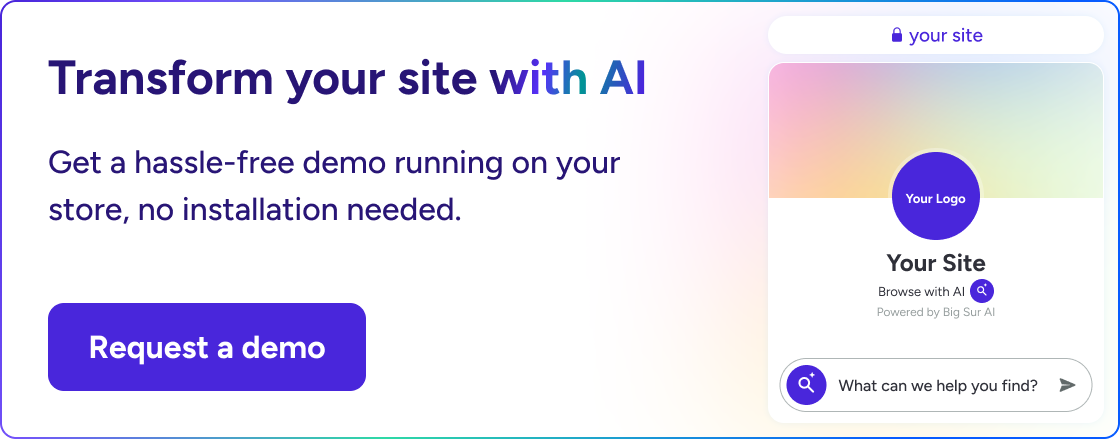Botpress Review (2025): Key Features, Pricing & Insights
Botpress is a flexible, developer-first conversational AI platform offering modular workflows, advanced NLU, self-hosting, and open-source customization, but has a steep learning curve and higher setup costs compared to turnkey solutions like Big Sur AI.
Covered in this article:
- Key features and strengths
- Pricing tiers and add-ons
- Pros, cons, and real user reviews
- Workflow automation and integrations
- Scalability and deployment considerations
- Top alternatives to Botpress
What is Botpress?
Botpress is a developer-focused conversational AI platform.
It lets you design, deploy, and manage chatbots and virtual assistants using visual flows and modular building blocks integrated with your existing APIs and NLU models.
Botpress at a glance
Our verdict: 8.2/10
Botpress excels as a modular, developer-friendly platform for building and deploying scalable AI assistants and complex conversational workflows. Its open architecture, visual flow editor, and deep integration support make it especially appealing for technical teams and enterprises wanting granular control over their AI chat deployment.
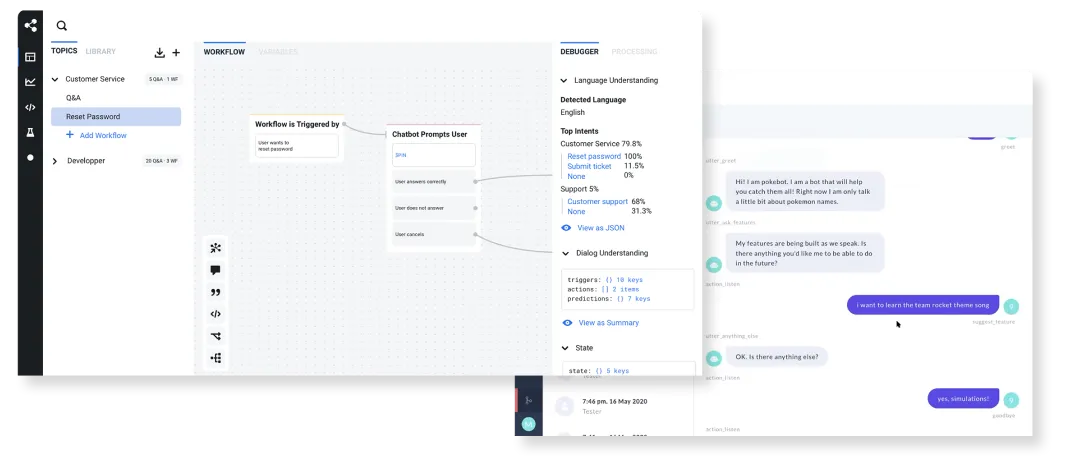
Botpress is best suited for businesses prioritizing advanced customization, self-hosting, and data security—though it has a steeper learning curve than most no-code competitors. While Botpress offers robust governance and flexibility, non-technical users may run into onboarding challenges and maintenance overhead.
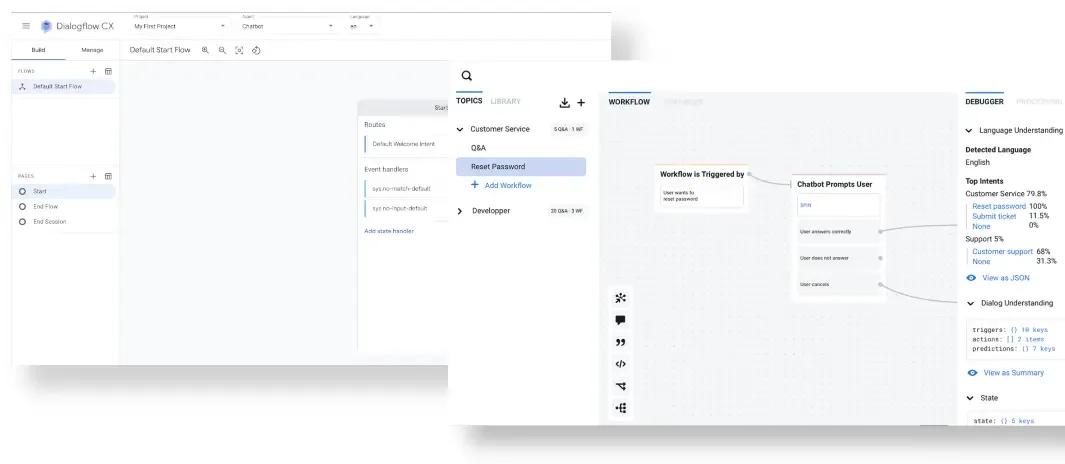
SMBs and large enterprises looking for transparent, maintainable conversational AI infrastructure (minus the SaaS lock-in) tend to rate Botpress highly. In 2025, decision-makers in regulated industries and product companies looking for agentic RAG and workflow customization should seriously consider Botpress, though Big Sur AI is a top challenger.
Average customer rating
G2: 4.5/5 from 45 reviews: praised for extensibility and power, but flagged for complexity and setup time.
Capterra: 4.4/5 from 39 reviews, with high marks for flexibility and dev-oriented features, some citing learning curve and limited documentation.
Best for
- Ideal use cases: Highly customizable FAQ bots, RAG-integrated support agents, customer onboarding, back-office process automation, regulated-industry deployments, omnichannel assistants.
- Strengths: Open-source core, on-prem/self-host options, visual workflow builder, extensive NLU engine and plugin ecosystem, advanced custom integrations.
Typical users
- Mid-sized to enterprise companies (finance, healthcare, retail, SaaS) valuing transparency and data ownership.
- Developer teams, solutions architects, product owners, IT managers; less suited for pure business or non-technical users without dev support.
Flagship customers
Used by 1000s of organizations worldwide, including global names like Allianz, Accenture, Schneider Electric, and L'Oréal.
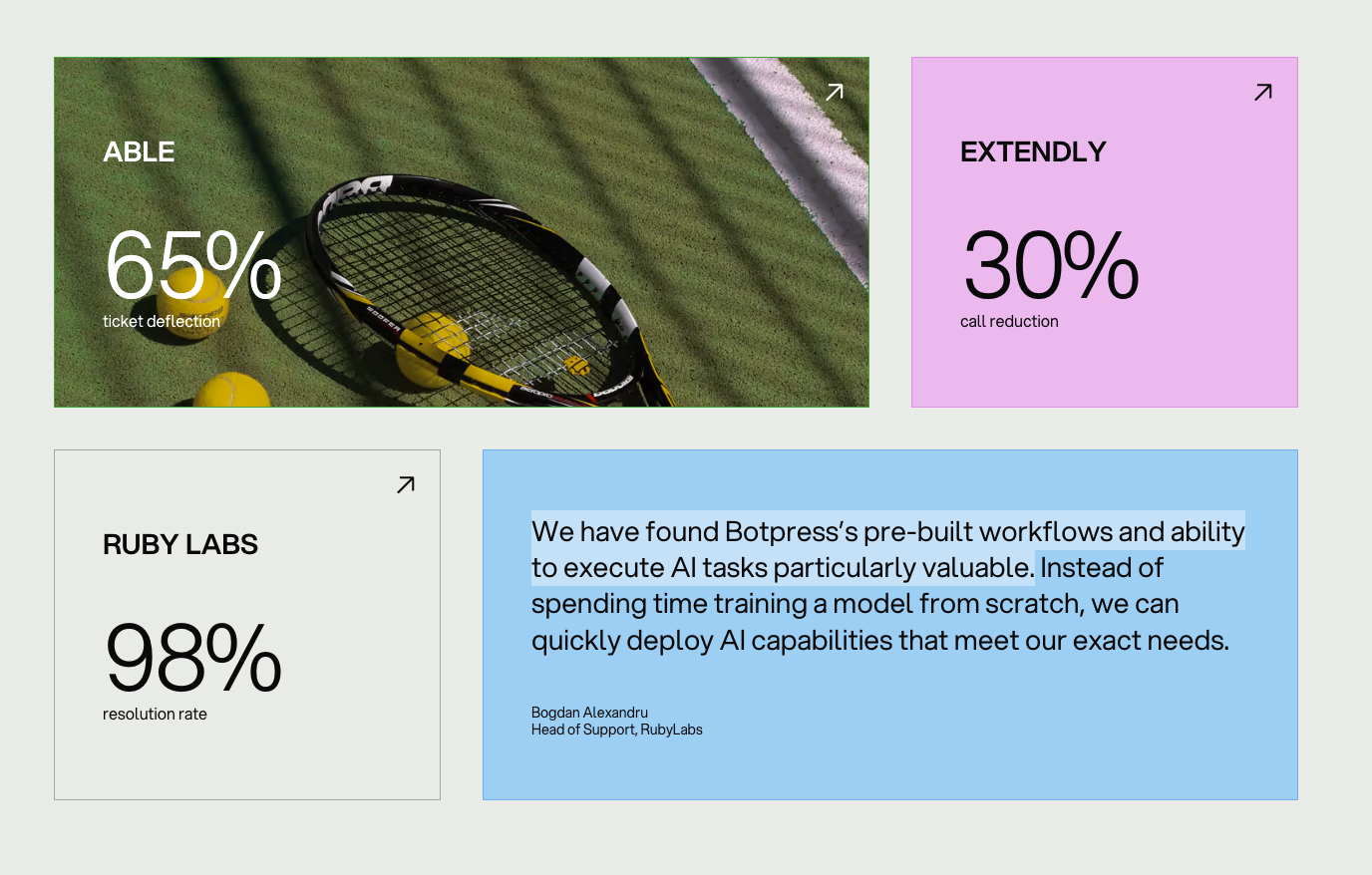
Client projects span sectors with case studies from Fortune 500s, government digital transformation teams, and mid-market SaaS vendors.
Pricing snapshot
| Plan | Price (monthly) | Key features |
|---|---|---|
| Community | Free (open source) | Unlimited bots, unlimited messages, full customization, self-hosted option, no support SLA |
| Professional | $299 | 10k MAU, cloud hosting, enhanced NLU, advanced integrations, 3 seats, email support |
| Enterprise | Custom | Unlimited users/MAU, SSO, priority support, SLA, on-prem/cloud, compliance (HIPAA, GDPR, SOC2) |
| Note: Add-ons include additional seats, higher throughput, extra integrations; custom options available for regulated industries. | ||
Strengths & weaknesses
✔ Pros
- Unparalleled flexibility for developers; open plugin ecosystem and SDK.
- Supports on-prem, private cloud, and hybrid models for stronger data control.
- Visual flow design tools, analytics, and native multichannel deployment (Web, WhatsApp, Messenger, custom UI).
- Advanced NLU/NLP capabilities and RAG support for agentic workflows.
✘ Cons
- Steep learning curve—requires developer involvement and more initial setup versus no-code alternatives.
- Less suited for users seeking “out-of-the-box” chatbots; visual tools can be daunting for non-developers.
- Premium features (enterprise security/compliance, priority support) are gated behind higher tiers.
Notable features
- Open-source engine: Retain full control over bot logic and data, with options to self-host and extend core platform features.
- Visual flow builder: Enables drag-and-drop workflow and conversation design, including slot-filling, memory, APIs, fallback logic.
- Advanced NLU: Custom intent/slot training, multilingual support, and REST/gRPC API for building complex dialog agents.
- Plugin marketplace: Access/craft reusable plugins for integrations (Zendesk, Salesforce, custom APIs).
- Conversational analytics: In-depth reporting on user queries, NLU performance, and conversion/fallback rates.
How to use Botpress the smart way
Botpress is made for rapid AI agent development, tailored workflows, and smooth deployment.
Here’s how to use it most effectively 👇
Start in the Botpress Studio ⤵️
The core workflow happens visually in the Studio, where you build and customize agents using Flow Editor and Q&A tools.
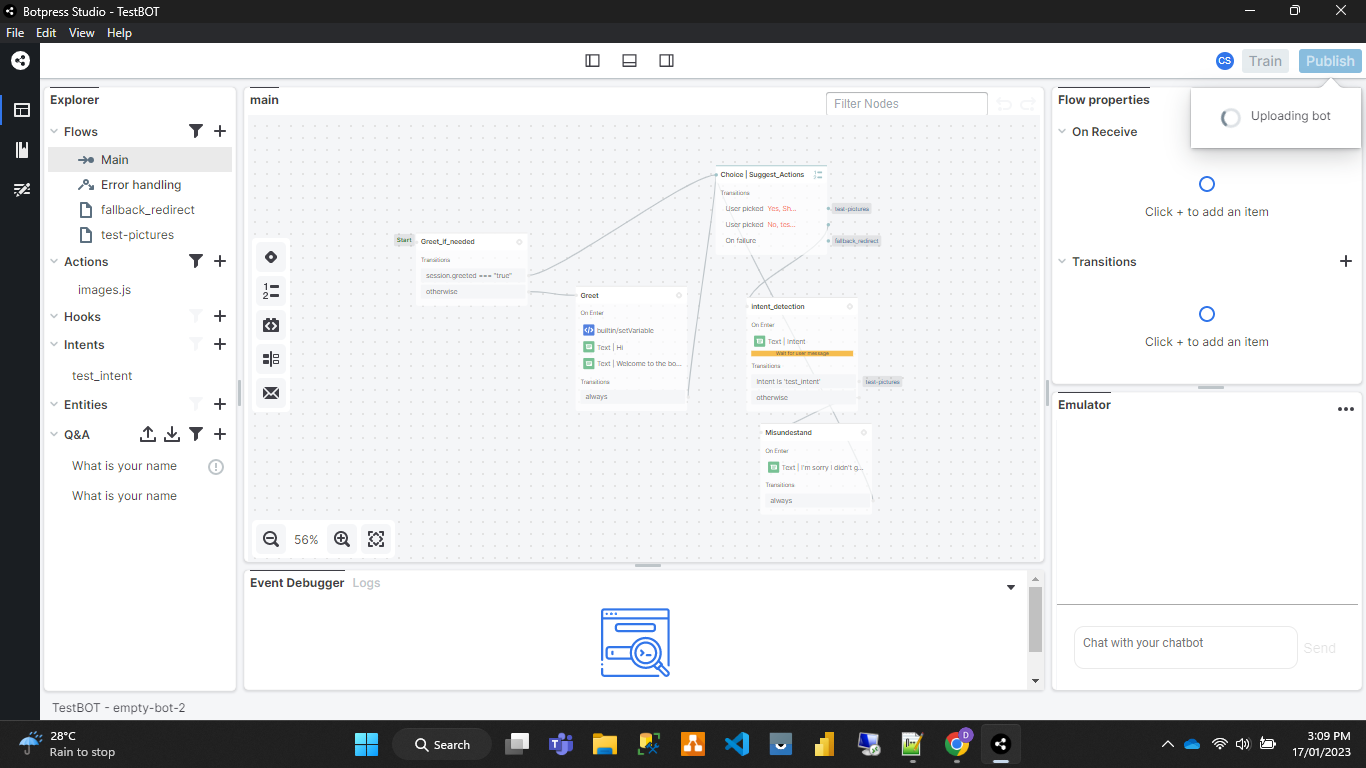
Quick setup: Get your workspace ready
- Sign up and create a new workspace on botpress.com.
- Click New Bot in the Studio, name your bot, and choose a template that fits your use case.
Connect your data sources and tools
- Integrate documents, databases, spreadsheets, or connect to APIs from the sidebar.
- Use the Knowledge Base to upload files or import data for better context
- For dynamic responses, connect external APIs through built-in integrations or Actions.
Design flows for precision
- Use the Flow Editor to design multi-step conversations visually.
- Add Nodes for each dialog step, set up triggers, and assign variable actions.
- Use conditional logic and context handling for complex tasks (e.g., authentication, scheduling) ⤵️
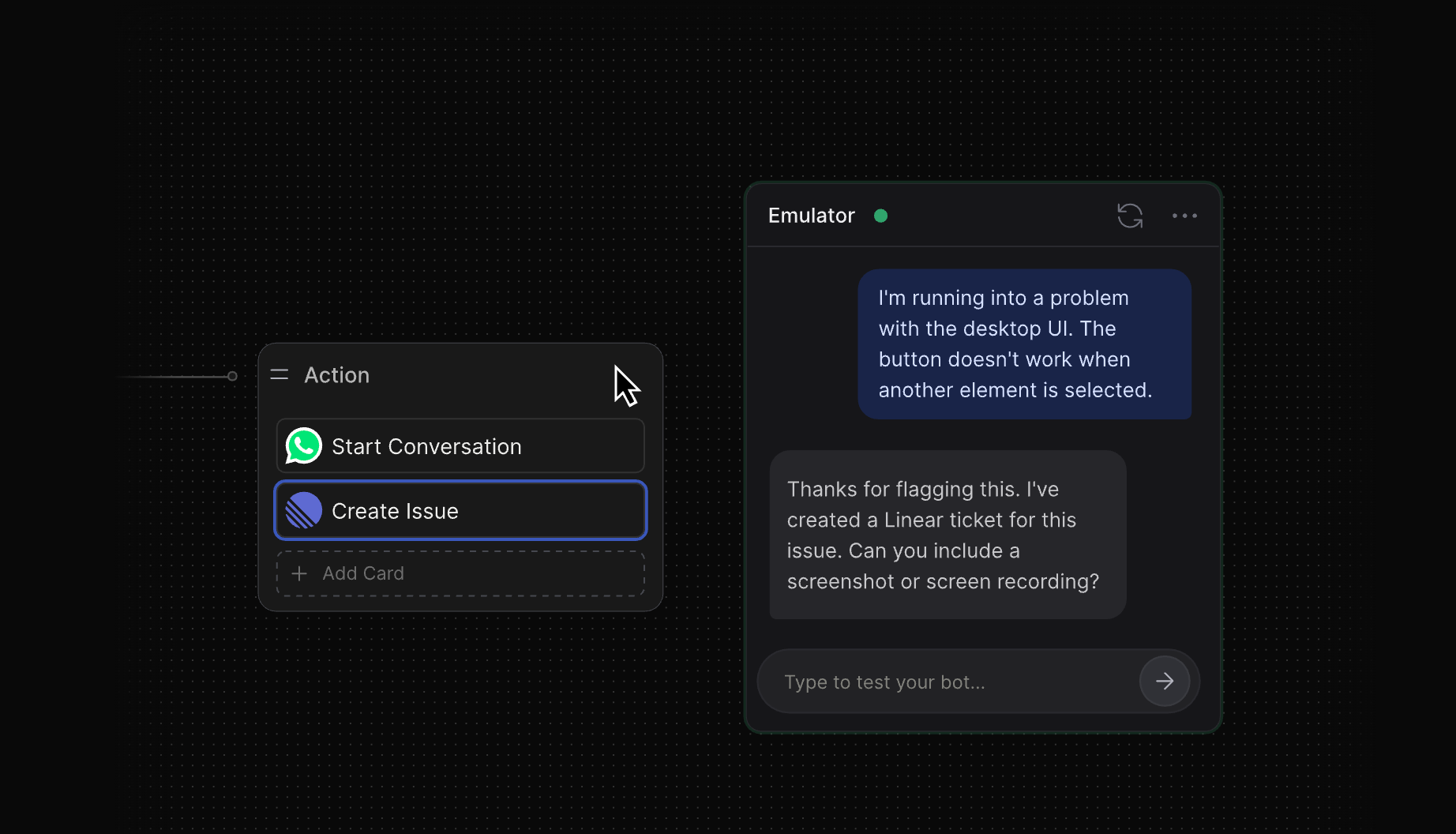
Tweak agent skills and policies
- In the Q&A section, maintain question-answer pairs for retrieval.
- Fine-tune NLU settings to optimize how your agent parses intent.
- Add guardrails by setting up fallback responses and defining expressions to handle edge cases.
Test and iterate instantly
- Use the Test Chat panel to interact with your bot as you build.
- Review logs and analyze conversation flows for gaps or errors ⤵️
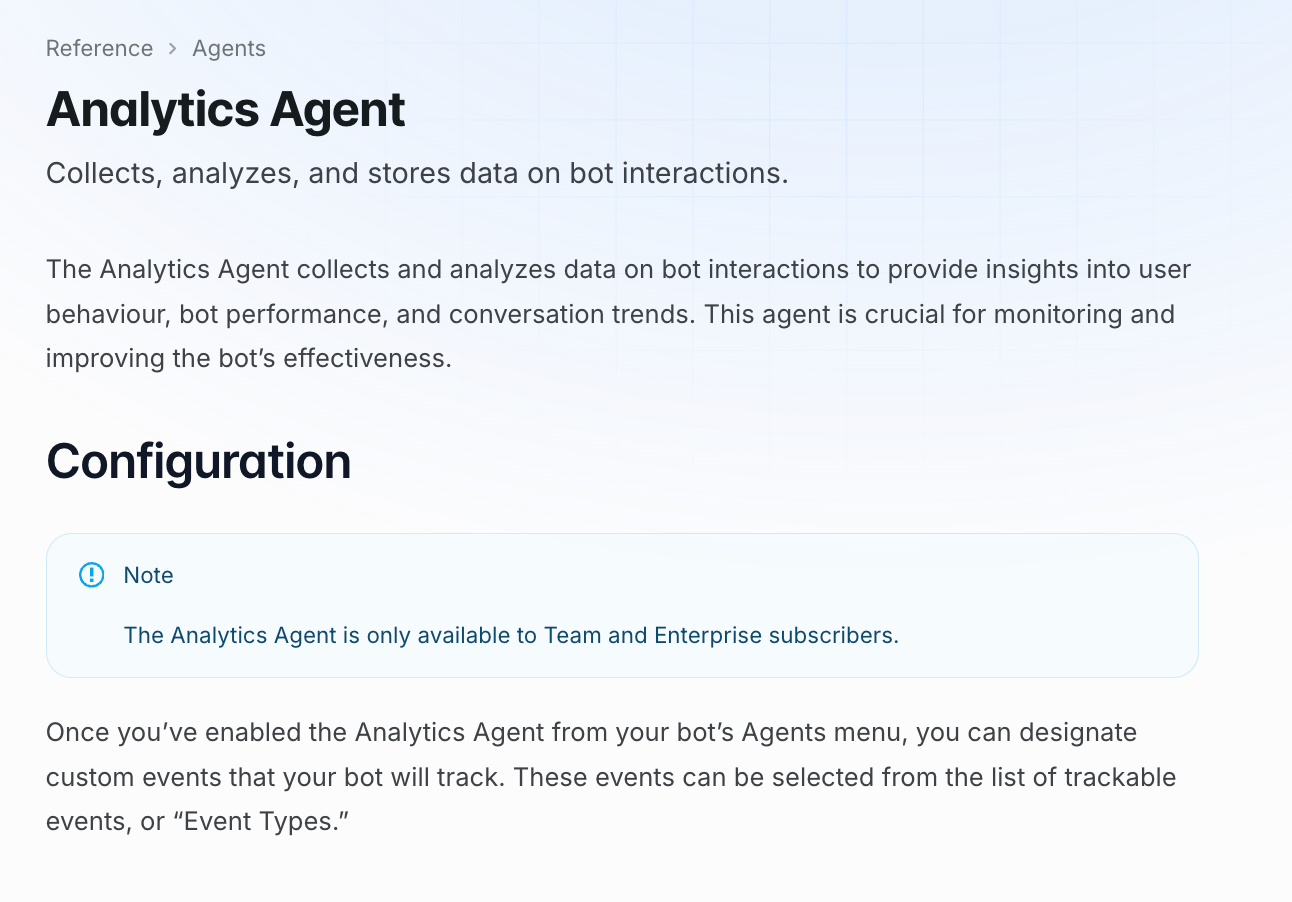
Deploy on your channels
- Deploy to web, WhatsApp, Slack, Microsoft Teams, and more directly from the Deploy panel.
- Use embeddable widgets and ready-made connectors for omnichannel presence.
Monitor, optimize, scale
- Check the Analytics dashboard for real user queries and performance.
- Track handoffs, failure points, and utilize feedback loops to continuously improve agent accuracy and helpfulness.
💡 Pro tip: Combine Botpress SDKs or trigger custom functions for advanced integrations and automation.
Botpress's most popular features?
Here are the five most popular Botpress features that users consistently praise, based on forum feedback and real reviews:
Visual flow builder for conversation design
Botpress's drag-and-drop visual flow builder empowers teams to design complex, multi-turn conversations without code. You can define conversation logic, add conditional branches, and manage context visually. This makes prototyping, debugging, and iterating on flows highly efficient, especially for teams that need to collaborate across technical and non-technical stakeholders.
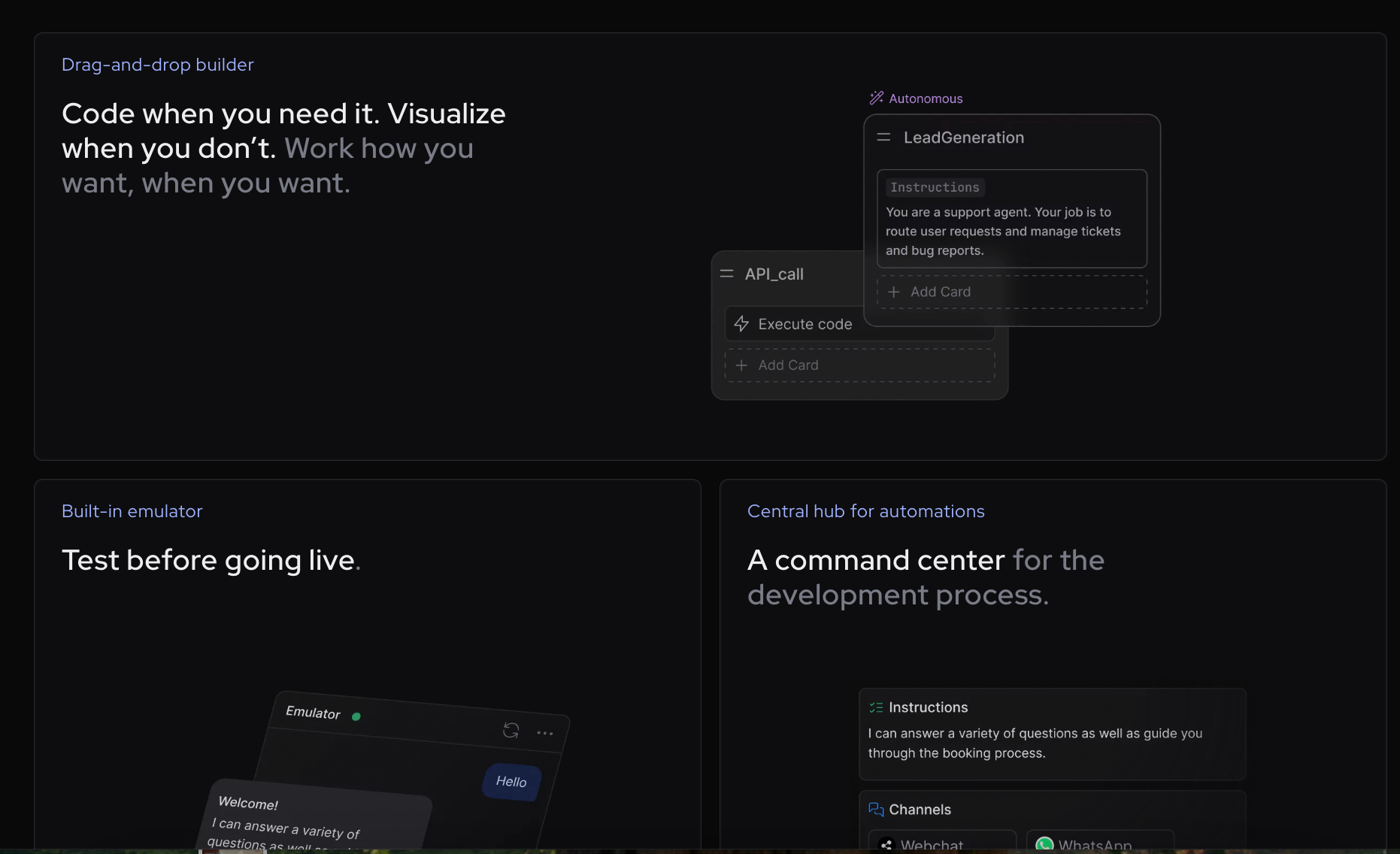
Multichannel deployment with native integrations
Botpress lets you deploy bots across major channels out of the box, including web, Facebook Messenger, Microsoft Teams, Slack, and WhatsApp. The prebuilt connectors handle channel-specific formatting and events, so you can reuse one bot logic and maintain consistent interactions regardless of where users engage. It reduces the burden of handling channel quirks and speeds up time to go live.
NLU engine customization and multi-language support
The built-in NLU engine allows granular configuration of intents, entities, and slot filling. You can tailor models for domain-specific phrases, boost accuracy with synonyms and patterns, and support over 100 languages via built-in translation and language detection. This means complex, multilingual bots can be developed and maintained in one system, reducing reliance on external NLU providers.
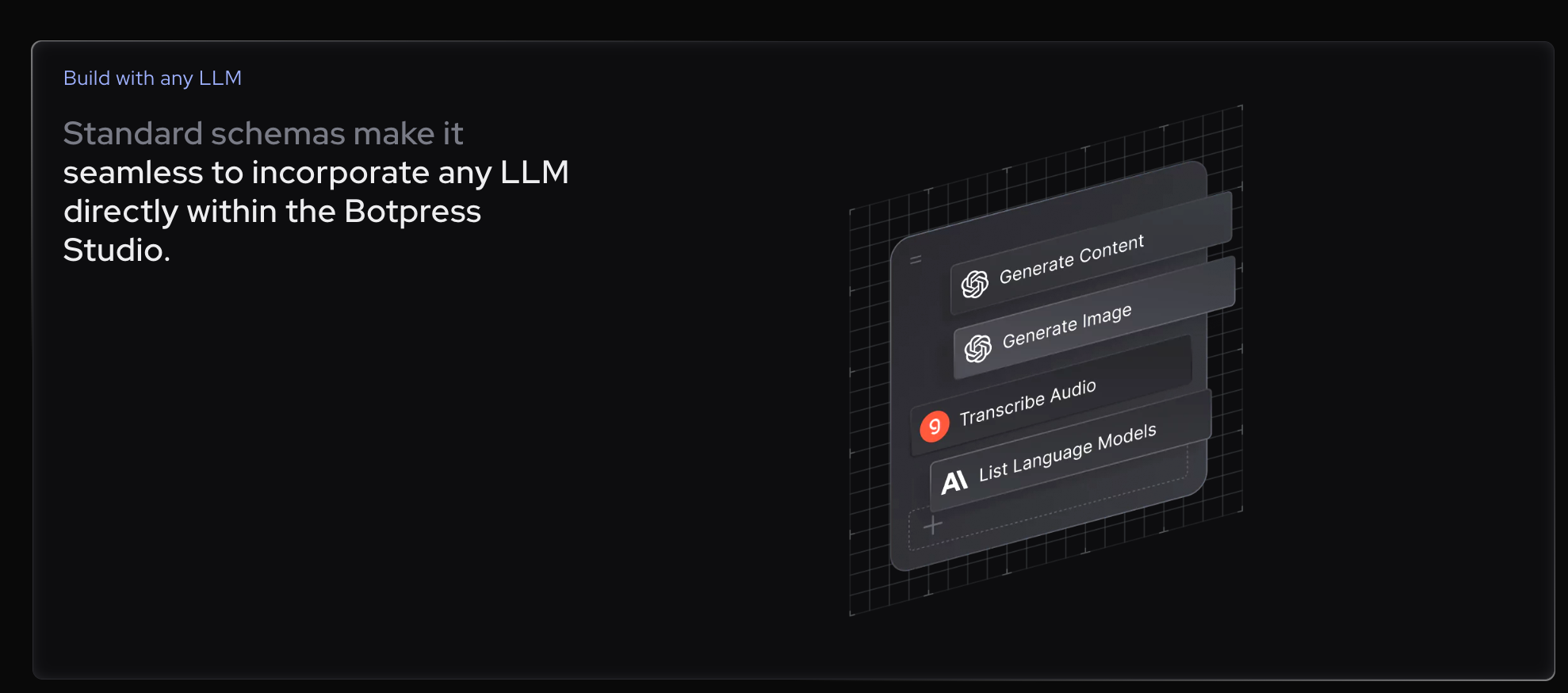
Modular architecture and open-source extensibility
Botpress is open-source and designed with modules, making it easy to extend and maintain. Teams can develop and install custom modules for third-party integrations, analytics, or specialized logic. Because of its modularity, adding or updating functionality doesn’t require forking the core platform, making upgrades and security patches easier to manage in production settings.
Built-in analytics and user event tracking
Botpress includes detailed analytics to surface conversation metrics, user retention, NLP performance, and flow bottlenecks. You can view user journey visualizations, segment engagement by channel or intent, and address friction points quickly. These analytics support rapid iteration and targeted improvements, directly from the admin interface.
💡 TL;DR → If you care about visual flow design, seamless multichannel deployment, and deep customization with open-source flexibility, Botpress is a great pick. If you value out-of-the-box advanced AI features like generative responses or specialized enterprise integrations, maybe consider alternatives.
Botpress's customer reviews: The Good & the Bad
🎯 Overall Ratings
Capterra: 4.5 / 5 (230+ reviews), with particularly high marks for functionality and customization
G2: 4.3 / 5 (120+ reviews), with frequent positive mentions of developer experience and open-source ecosystem, but criticism for documentation and support access
Product Hunt: Generally positive, highlighted for its developer-oriented approach and active roadmap
Reddit, Dev.to, and Twitter: Praised in developer communities for architecting advanced conversational flows but noted for setup hurdles and nuanced limitations
👍 The good
Real-time debugging and visual flow editor
Many advanced users highlight that the integrated debugging suite and visual flow builder streamline the creation and iteration of complex conversational agents, especially when testing branching dialogues in production-like environments.
“Botpress’s real-time emulator and visual flow builder cut our testing time by half and catch odd dialogue bugs way sooner than other platforms” (G2 review, Mar 2024).
Modular NLU pipeline and custom code hooks
Botpress is praised for its highly modular NLU pipeline that enables fine-grained manipulation and on-the-fly injection of custom code. This appeals to those building sophisticated AI agents rather than basic FAQ bots.
“The ability to inject custom hooks at almost any stage lets us prototype AI agents and tweak behavior without redeploying the whole thing” (Reddit discussion, r/Chatbots, Feb 2024).
Open-source extensibility and plugin ecosystem
Customers frequently note the open-source foundation and ecosystem of community-built plugins as a unique benefit, allowing quick integration with tools like CRMs and analytics.
“We use third-party modules for complex voice integrations, which would’ve taken months to build from scratch” (Dev.to, Jan 2024).
Strong versioning and rollback support
Professional users mention Botpress’s built-in versioning and simple rollback features for managing risk in enterprise deployments.
“We can snapshot state and roll back to stable flows in minutes if a new feature breaks anything” (Capterra, Dec 2023).
👎 The bad
Documentation gaps for advanced topics
While basics are well-covered, advanced features such as multi-bot orchestrations or intricate API event handling are less documented, slowing adoption for enterprise-level use.
“Found myself reverse engineering sample projects because the docs don’t touch on webhooks or multi-bot handoffs in enough depth” (G2 review, Jan 2024).
Steep learning curve for non-developers
Some users comment that while Botpress is highly customizable, it’s far less approachable for non-developers, with a “DIY” ethos that can be a barrier.
“I’m a product manager but struggled to get prototypes running without pulling in a dev” (Product Hunt comments, Feb 2024).
Limited multi-language localization management
Despite support for multiple languages, power users report friction managing and updating large translation sets, especially for dynamic content.
“It’s powerful, but juggling translation files at scale is tedious and prone to errors” (Capterra, Oct 2023).
Occasional upgrade and migration issues
Several reports note that major updates sometimes introduce breaking changes that aren’t always clearly messaged, requiring manual intervention.
“Upgrading from 12.x to 13.x, several core actions failed and required manual patching. Not for the faint of heart if you’re running business-critical bots” (Reddit, r/Chatbots, Mar 2024).
Pricing: How much does Botpress cost?
Botpress uses a usage-based subscription model split across four plans with variable monthly AI spending and workspace limits.
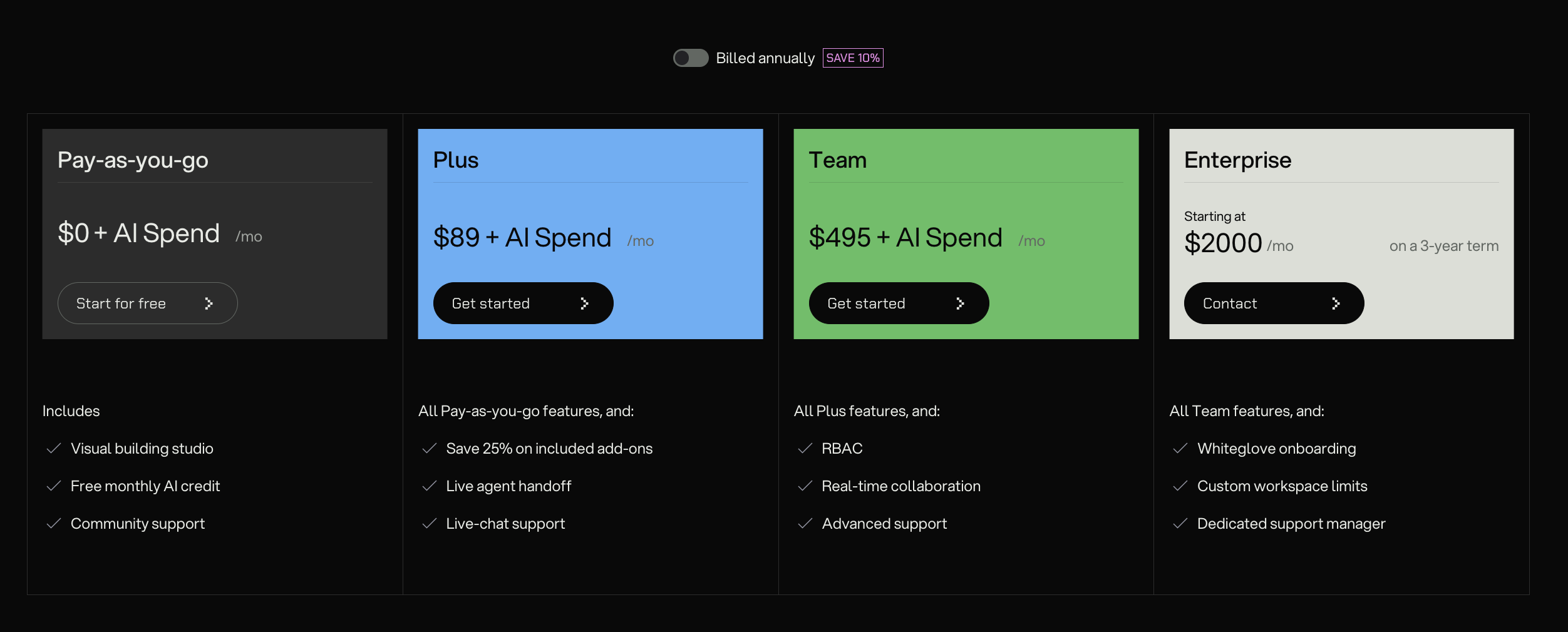
Choose between these 4 plans:
- Pay-as-you-go – $0/month plus AI spend, includes Studio, free monthly $5 AI credit, community support, 1 bot, basic usage limits.
- Plus – $89/month plus AI spend, includes all Pay-as-you-go features, live agent handoff, live chat support, 2 bots, higher usage caps, 25% off add-ons.
- Team – $495/month plus AI spend, includes Plus features, RBAC, real-time collaboration, advanced support, 3 bots, max AI spend $500/month.
- Enterprise – from $2,000/month, includes Team features plus white-glove onboarding, custom workspace limits, dedicated support manager, custom AI spend caps.
Price limitations & potential surprises
- Usage caps apply to incoming messages, table rows, file and vector DB storage; exceeding limits triggers add-on purchases.
- AI token usage is billed at provider cost, and pay-as-you-go caps at $100/month unless manually increased; the $5 monthly free credit may run out fast.
Add-ons?
| Add-on | Functionality | Pricing |
|---|---|---|
| Incoming messages | Additional monthly message capacity | $20 per 5,000 messages |
| Table rows | Extra structured data storage | $25 per 100,000 rows |
| Bots | Add extra AI agents | $10 per bot/month |
| Always Alive | Reserved compute for faster responses | $10 per bot/month |
| Collaborator seats | Add workspace user seats | $25 per seat/month |
| Vector DB storage | Extra vector index space | $20 per GB/month |
| File storage | Extra media storage | $10 per 10 GB/month |
💡 Most customers will incur additional costs if total message volume outgrows plan limits, so monitor your chat usage as you scale.
Botpress vs competitors: Workflows, automation & integrations
Visual workflow editor allows rapid prototyping
Botpress leverages a drag-and-drop visual flow builder for conversation design, enabling fast prototyping and iterative workflow creation.
Conditions, actions, and triggers can be orchestrated in a modular environment.
Developers can embed code logic via code nodes, custom actions, and API calls for advanced workflow handling such as ticket escalation, appointment booking, or data retrieval. Reusable workflow components and global flows reduce redundancy and simplify scaling across multiple bots.
Event-driven automation for complex logic
Workflows in Botpress are event-driven, allowing bots to react not only to user input but also to external triggers like webhook callbacks, message status updates, or business system events.
Botpress supports asynchronous operations, queueing, and custom middleware for sophisticated automation scenarios such as transactional workflows or time-based reminders.
Automatic handoff logic for fallback and exception management is configurable at both node and workflow levels.
Built-in and custom integrations via APIs, webhooks, and native plugins
Botpress ships with connectors for Slack, Microsoft Teams, Facebook Messenger, WhatsApp, Twilio SMS, and others. The platform exposes REST and GraphQL APIs for bidirectional integration with CRM, ERP, RPA, or custom back-end services.
Botpress supports webhook actions for communicating with external microservices.
Native modules and a plugin system allow deep customization, including custom channel connectors and third-party NLU or analytics integrations.
Deployment flexibility and enterprise automation
Botpress is deployable on-premises, in private clouds, or as a managed SaaS. It supports multi-bot orchestration, version control, and CI/CD pipelines for agile development and rollout.
Admins can leverage environment-based configuration and secrets management for secure automation across business-critical domains.
Automated testing suites and analytics dashboards are included for workflow optimization and compliance monitoring.
Is Botpress scalable?
Botpress is designed for growth, but scaling usage introduces both pricing and technical factors that teams should plan for.
How Botpress pricing scales
Botpress charges per monthly active user (MAU), not per message. Costs ramp linearly as your user base grows, with the lowest tier starting at $495/month for up to 5,000 MAUs.
Higher usage unlocks custom pricing, but out-of-the-box plans jump quickly --> e.g., moving from 5,000 to 10,000 MAUs means a full tier up, with little flexibility for in-between volumes.
Critical points to manage as you scale
- Stepwise plan jumps: Unlike usage-based credit systems, Botpress requires upgrades to the next pricing tier as soon as you cross thresholds, rather than charging overages. Without fine-grained plan options, cost spikes can hit suddenly if user growth is uneven.
- Integration costs add up: Advanced features like CRM integration or adding premium connectors (Zendesk, Salesforce) are not always included in the standard plan. Expect extra charges or the need for custom enterprise discussions if you need robust integrations at scale.
- Self-hosted and enterprise require commitment: Botpress offers both cloud and self-hosted options. The cloud version has soft limits and Botpress monitors usage, but for enterprise deployments with large numbers of bots or conversations, self-hosting might be required—this shifts maintenance and scaling challenges to your team. Be prepared for additional DevOps investment for things like autoscaling, database sharding, and backup strategies.
- Performance under high load: Botpress core is architected for scale (using Node.js and scalable databases) but live users have reported latency and webhook timeout issues under spiky, high-concurrency loads. High-traffic teams should stress-test with projected peak traffic and review their logging and monitoring strategies.
Example of scaling cost
Growing from 5,000 to 20,000 MAUs means moving from $495/month to a much higher custom enterprise price; multiple bots, custom integrations, or premium add-ons can push monthly spend well past the initial plan quote.
Actionable tips
- Plan for tier jumps in advance
- Build internal monitoring around latency and error rates
- Consider self-hosting early if expecting rapid or unpredictable growth
- Budget for integration work and premium connectors upfront
Does Botpress offer templates to get going quickly?
Yes, Botpress offers a library of pre-built templates and starter kits to accelerate setup. These templates include both generic flows and industry-specific use cases like customer support, e-commerce, appointment scheduling, and HR help desks. You can clone, remix, or extend these templates directly from the Botpress Studio or the Templates Hub.
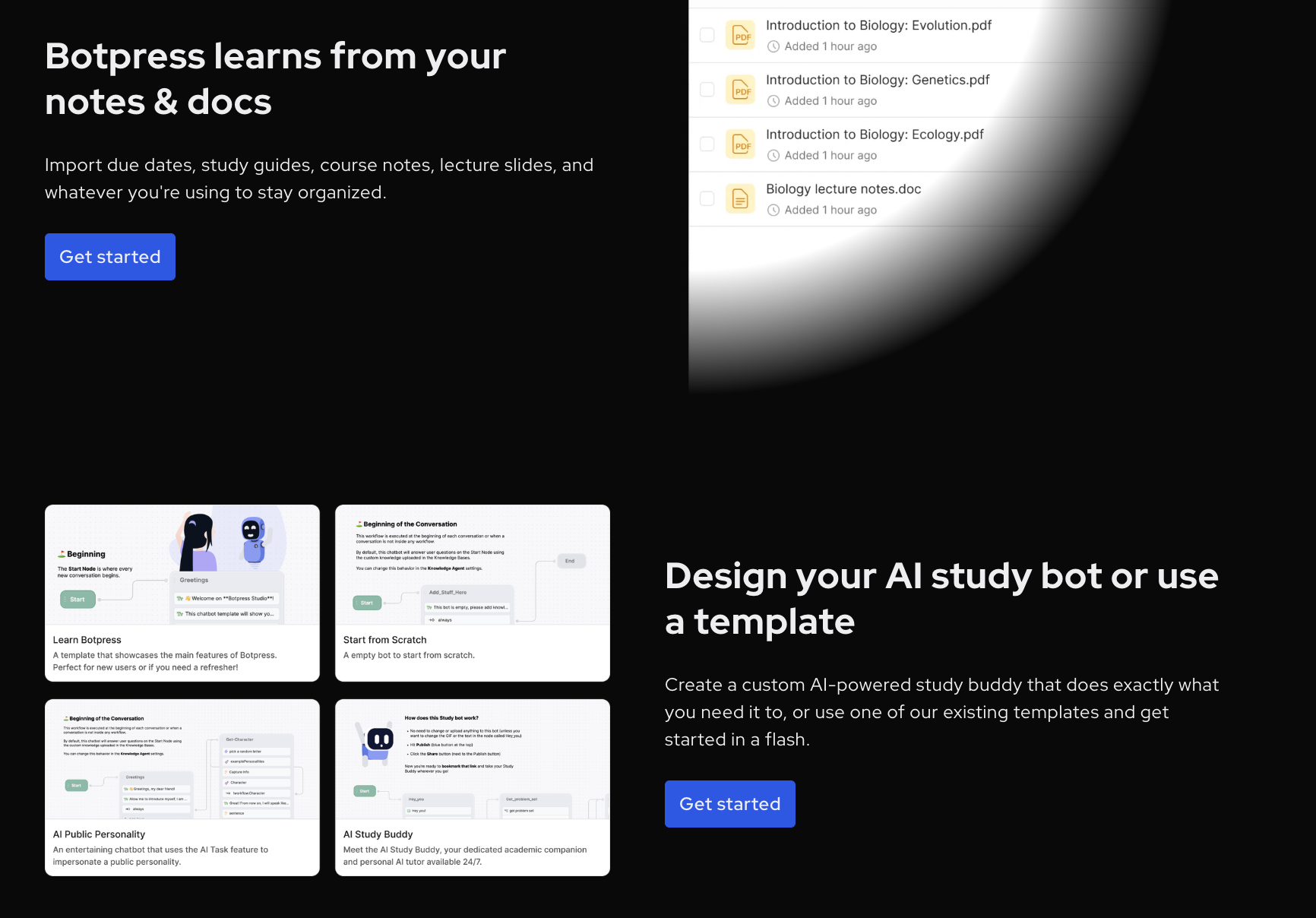
Each template ships with pre-configured workflows, intents, and even sample content mapped to real-world scenarios, making them effective for implementing established best practices without starting from a blank slate.
What’s the best alternative to Botpress?
✅ Best “Ready-Made” Alternative: Big Sur AI
If you want the best option for a turnkey, production-ready chatbot you can launch fast, Big Sur AI is the clear choice.
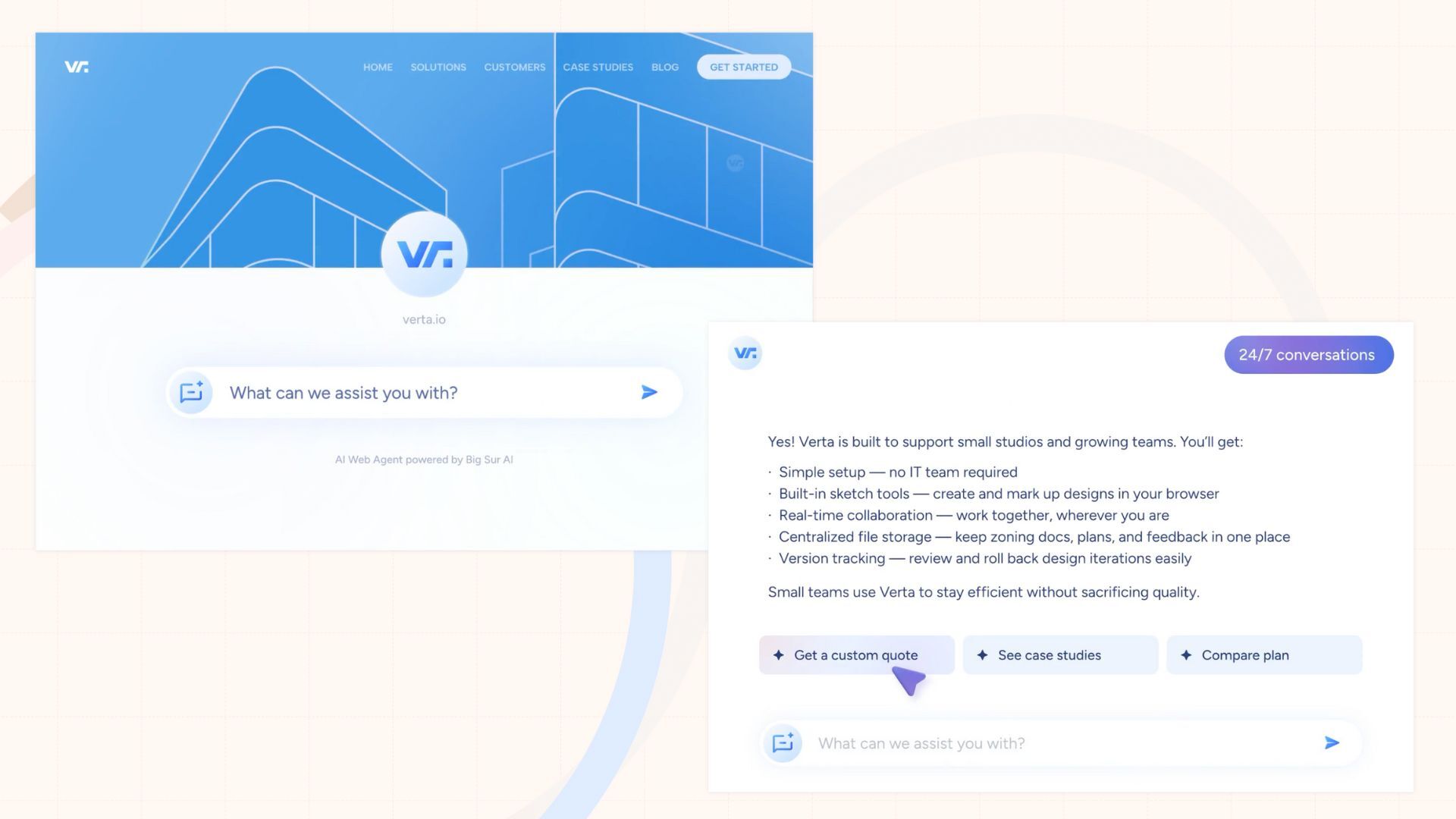
Why?
Big Sur AI is purpose-built for organizations seeking a no-code, high-performance chatbot with minimal friction and an excellent user experience. Unlike general-purpose builders like Botpress, which often require complex configuration and manual training, Big Sur AI delivers immediate value straight out of the box.
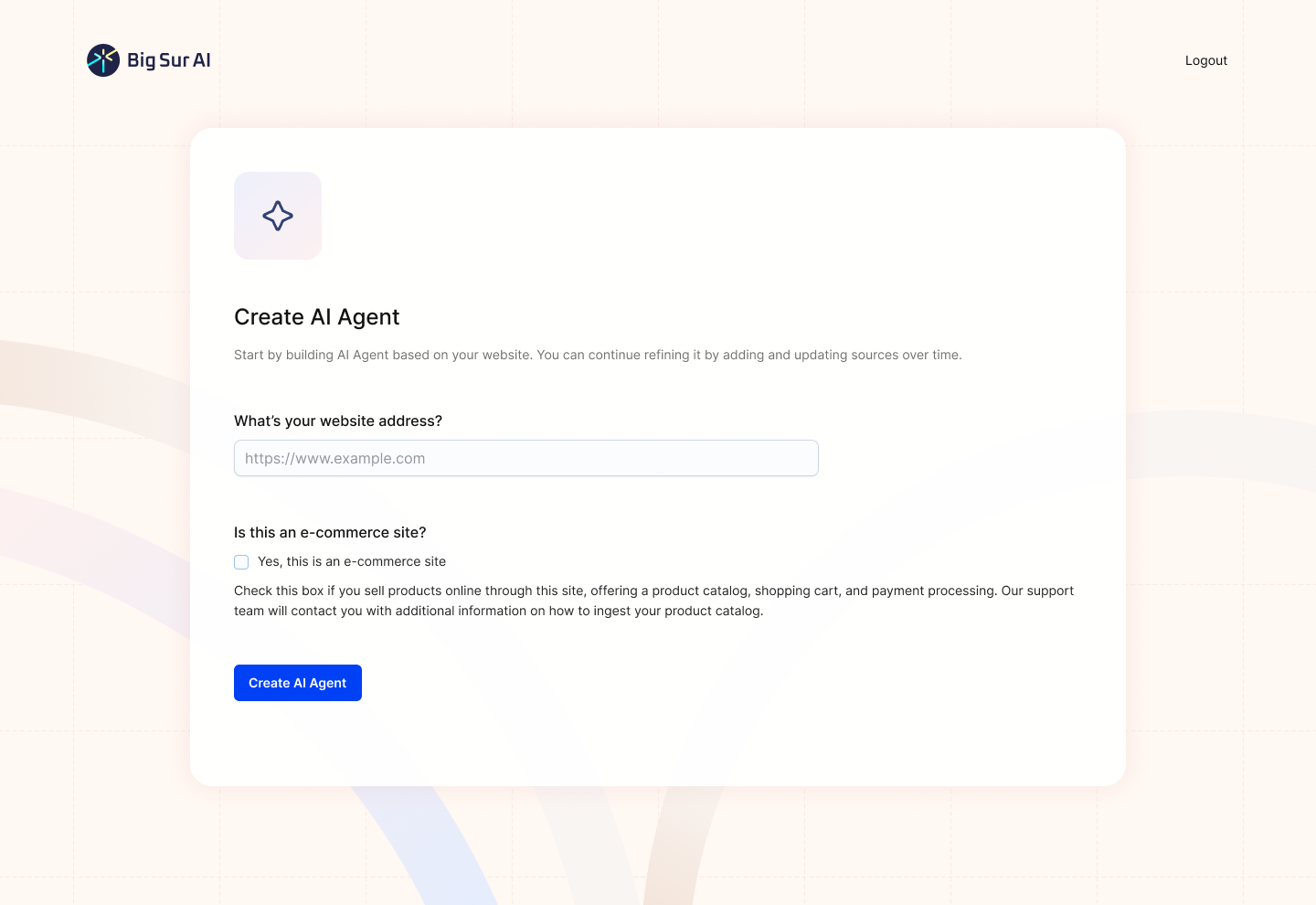
Here’s what makes it stand out:
- Powerful, pre-trained conversational AI that handles complex inquiries without extensive manual setup.
- Beautiful, fully customizable chatbot widget that’s easy to embed on any website and matches your branding.
- Enterprise-grade performance, offering LLM-powered semantic search, automated recommendations, and advanced content automation features beyond simple Q&A.
- Built-in lead capture and routing to automatically convert more visitors into leads and customers.
- Seamless integrations with CRMs, Zapier, webhooks, and more.
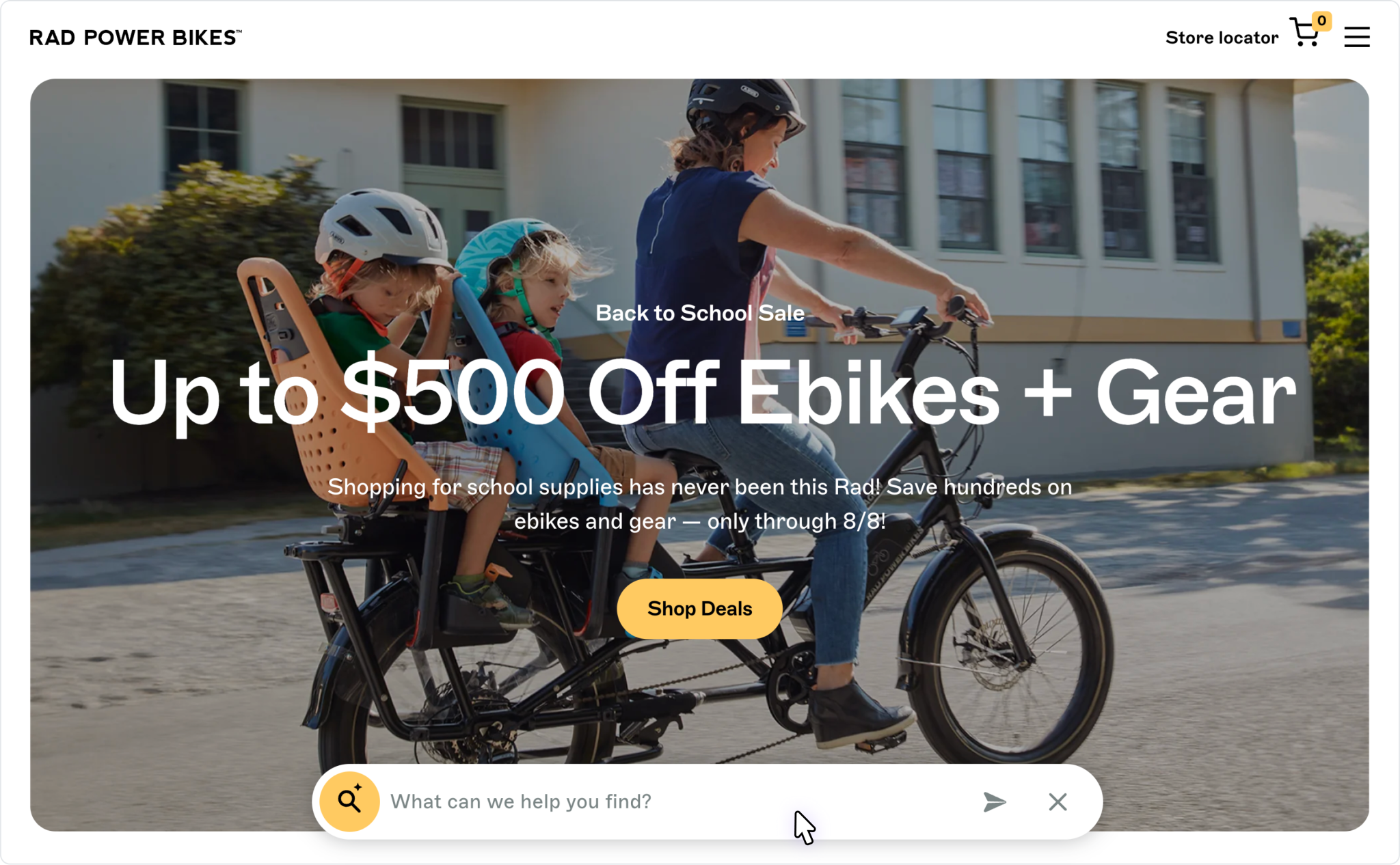
Bottom line 👇
If you need a chatbot that’s reliable, delivers high-quality answers, and launches with minimal setup, Big Sur AI is the best ready-made alternative to Botpress. It’s ideal for startups, agencies, and teams who want production-grade automation.
4 top alternatives to Botpress in 2025
| Tool | Best For | Key Strength | Drawbacks | Pricing |
|---|---|---|---|---|
| Big Sur AI | Pre-built AI agents and chatbots with enterprise focus | Ready-made AI solutions, rapid deployment, robust integration | Limited customization for highly complex custom flows | Custom (Contact Sales) |
| Google Dialogflow | Developers needing NLU and omni-channel support | Powerful NLP, integrates easily with Google ecosystem | Requires technical expertise; pricing complex for large-scale deployments | Free tier, then pay-as-you-go |
| Rasa | Open-source, highly customizable chatbots | Full control, on-premise deployment, extensibility | Steep learning curve, requires in-house AI/data science skills | Open source (Free), Enterprise (Contact Sales) |
| Yellow.ai | Businesses seeking multi-channel automation at scale | Omni-channel, no-code builder, strong analytics | Enterprise pricing, less suitable for startups/small projects | Custom (Contact Sales) |
Choosing the right alternative to Botpress depends on your specific needs:
- If you want to quickly deploy state-of-the-art, pre-built AI agents with strong enterprise integrations and minimal setup, <b>Big Sur AI</b> is the clear choice.
- For teams that need advanced NLP capabilities and Google Cloud integration, <b>Dialogflow</b> excels – especially if you prefer a managed, scalable solution.
- If open-source flexibility and deep customization are critical, and you have solid in-house technical resources, <b>Rasa</b> offers unmatched control.
- For enterprises aiming to automate customer engagement across multiple channels with easy visual builder tools, <b>Yellow.ai</b> provides a robust, no-code experience.
Consider your requirements for speed of deployment, customization, developer resources, and budget to find the best fit.
Next steps: Deploy your own AI chatbot in minutes
Here’s how you can deploy a fully-trained, customizable AI chatbot on your website in under 10 minutes with Big Sur AI 👇
- Sign up on Big Sur AI's Hub (link here).
- Enter your website URL. Big Sur AI will automatically analyze your site content.
- Customize your AI agent. Set up specific AI actions and decide where the AI agent will appear on your site.
- Launch and monitor. Your AI agent will be live in minutes, and you can track performance with real-time analytics.
